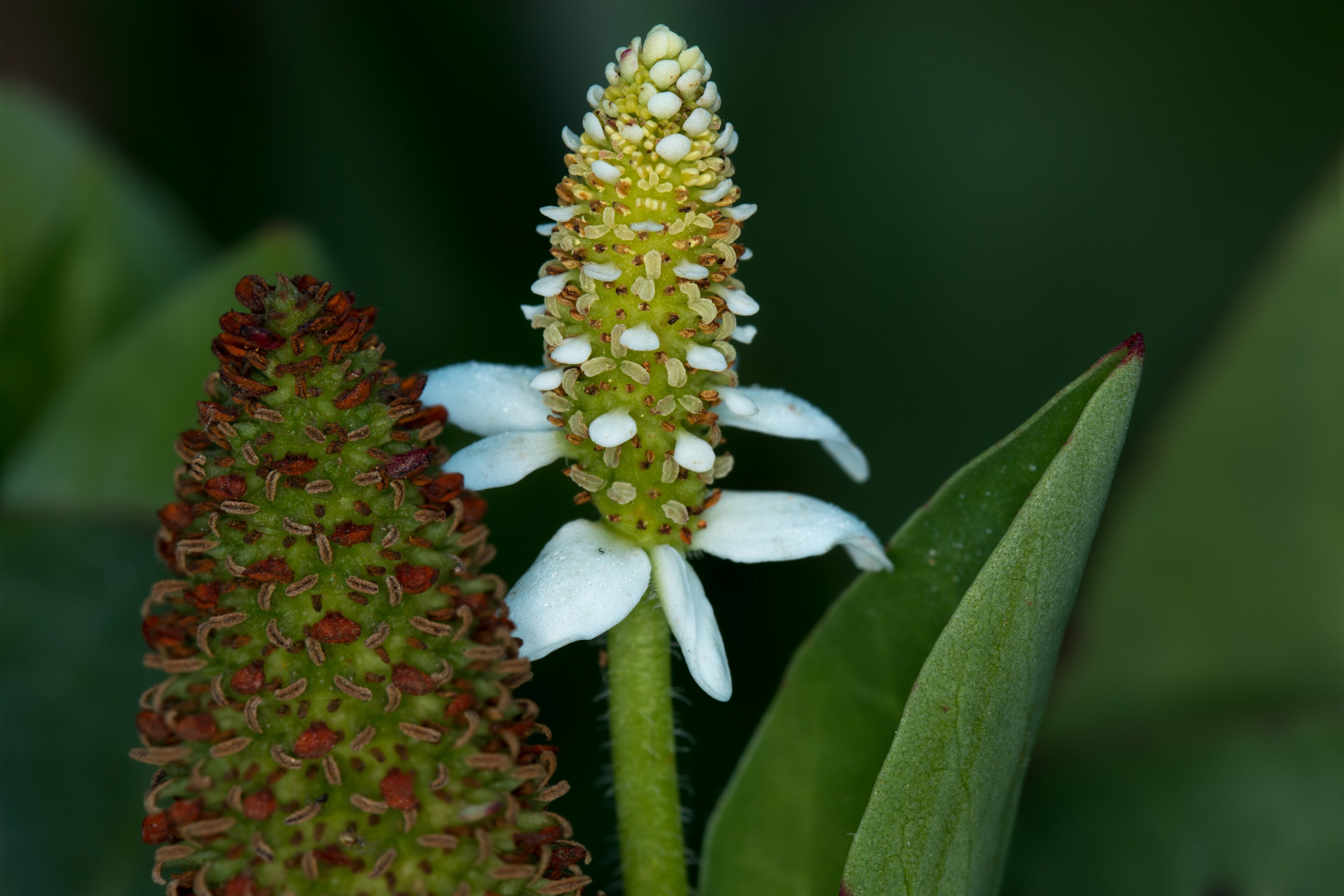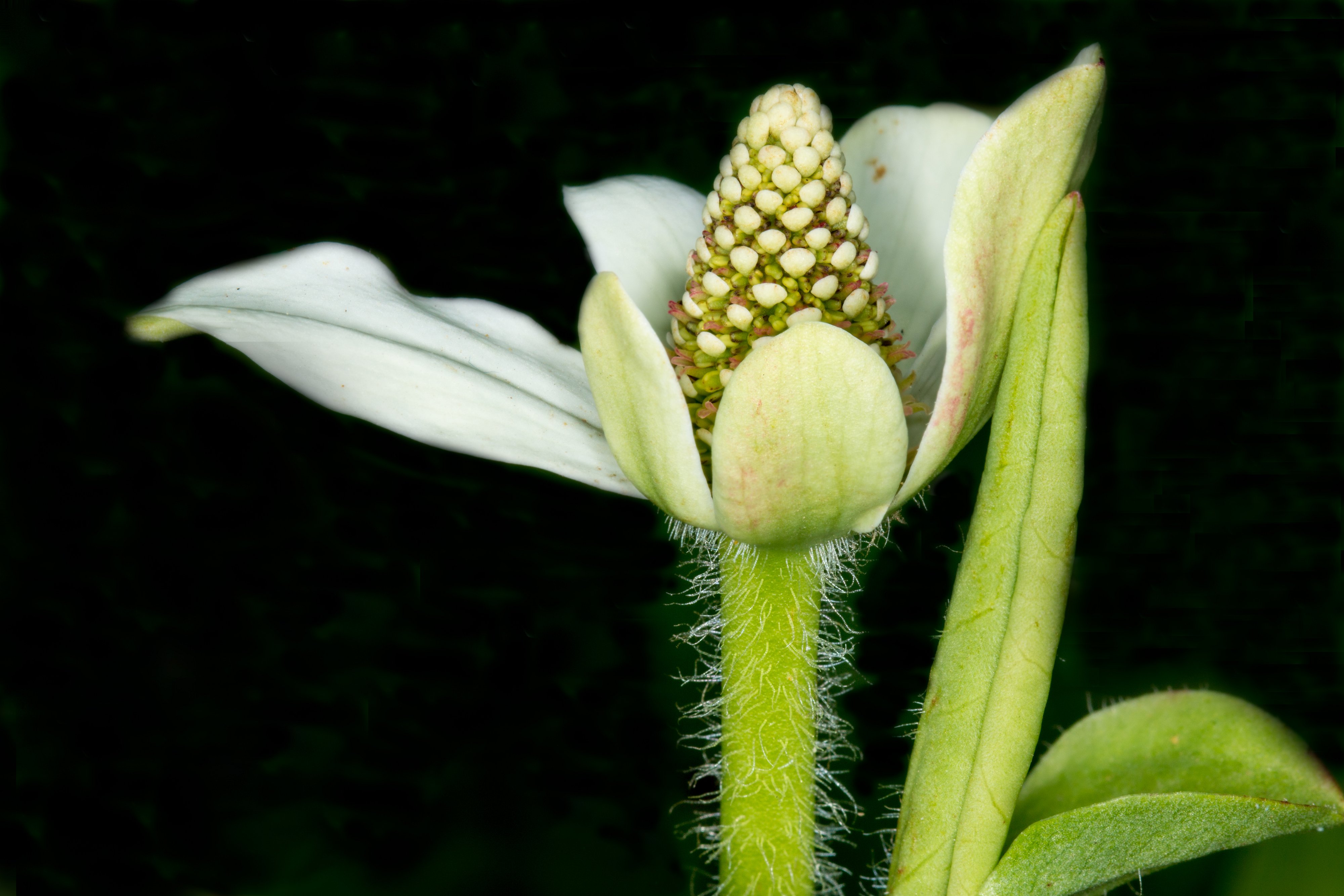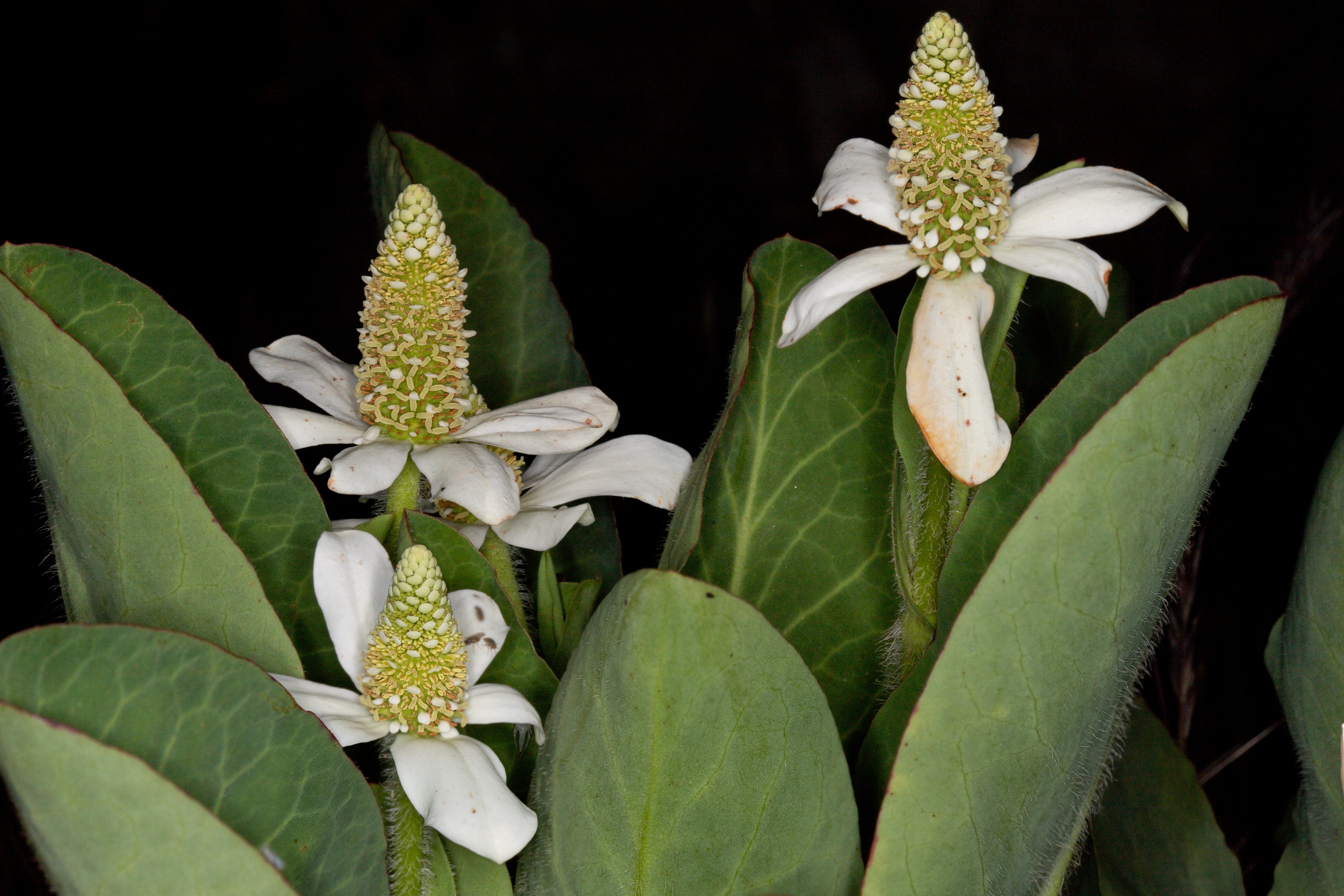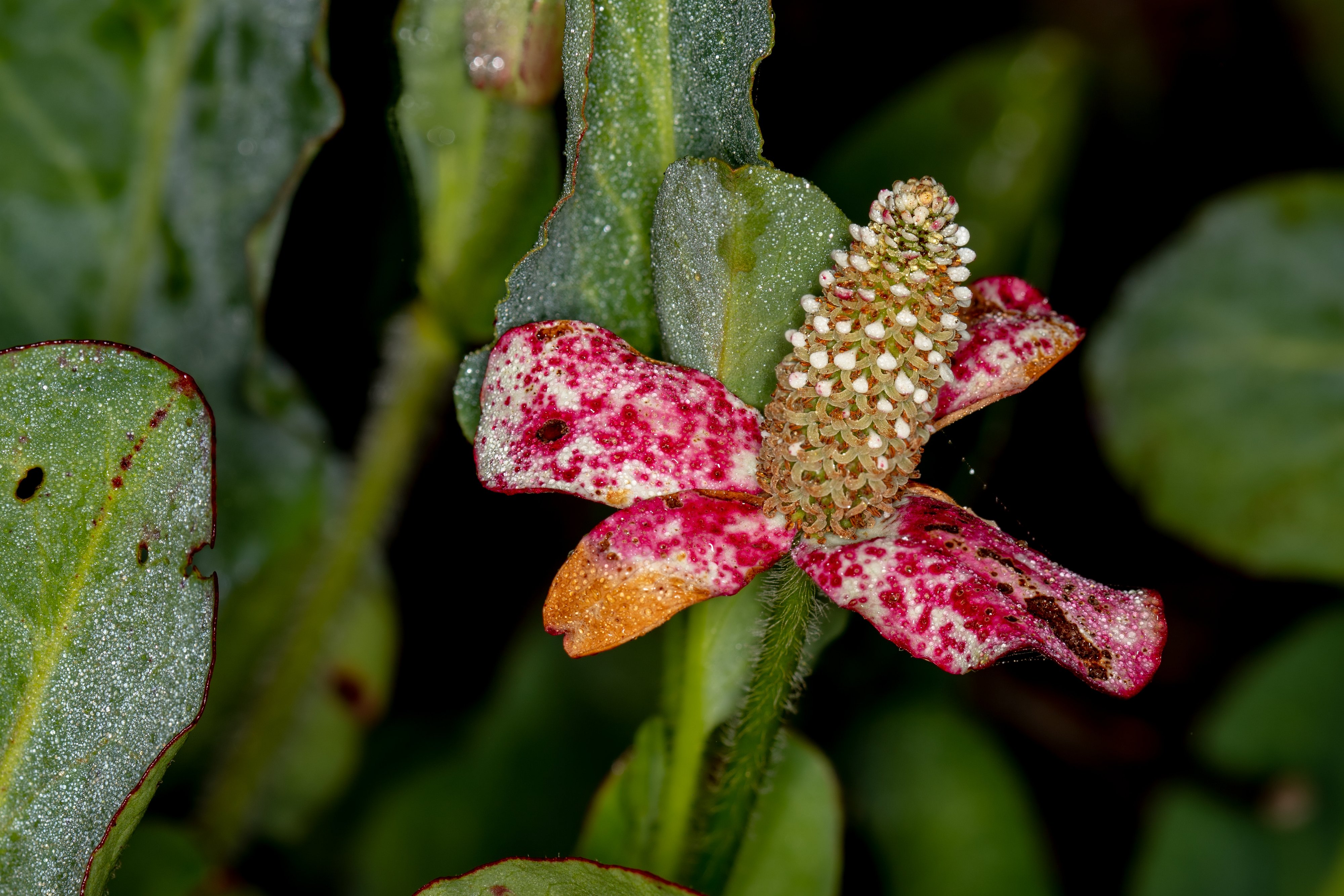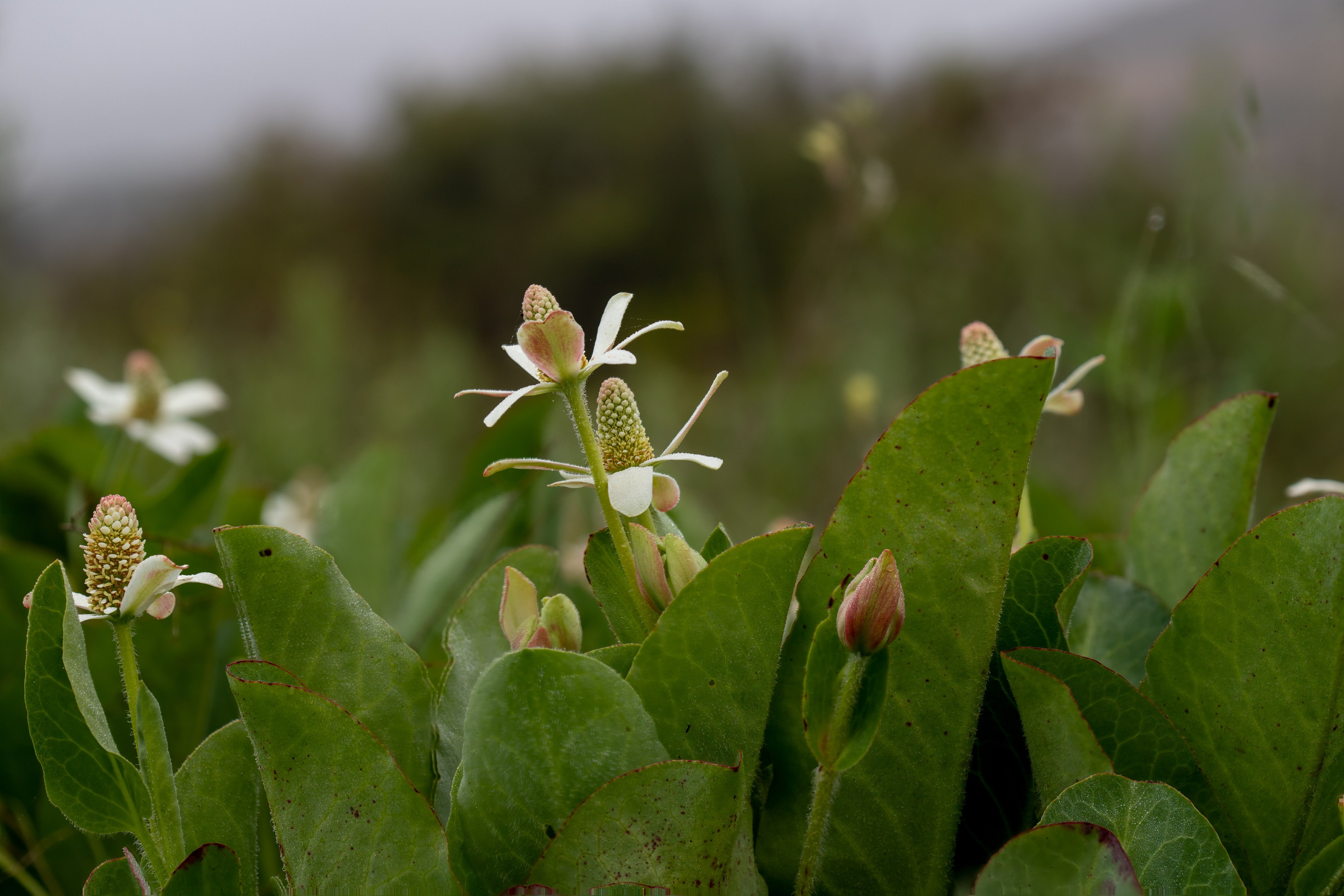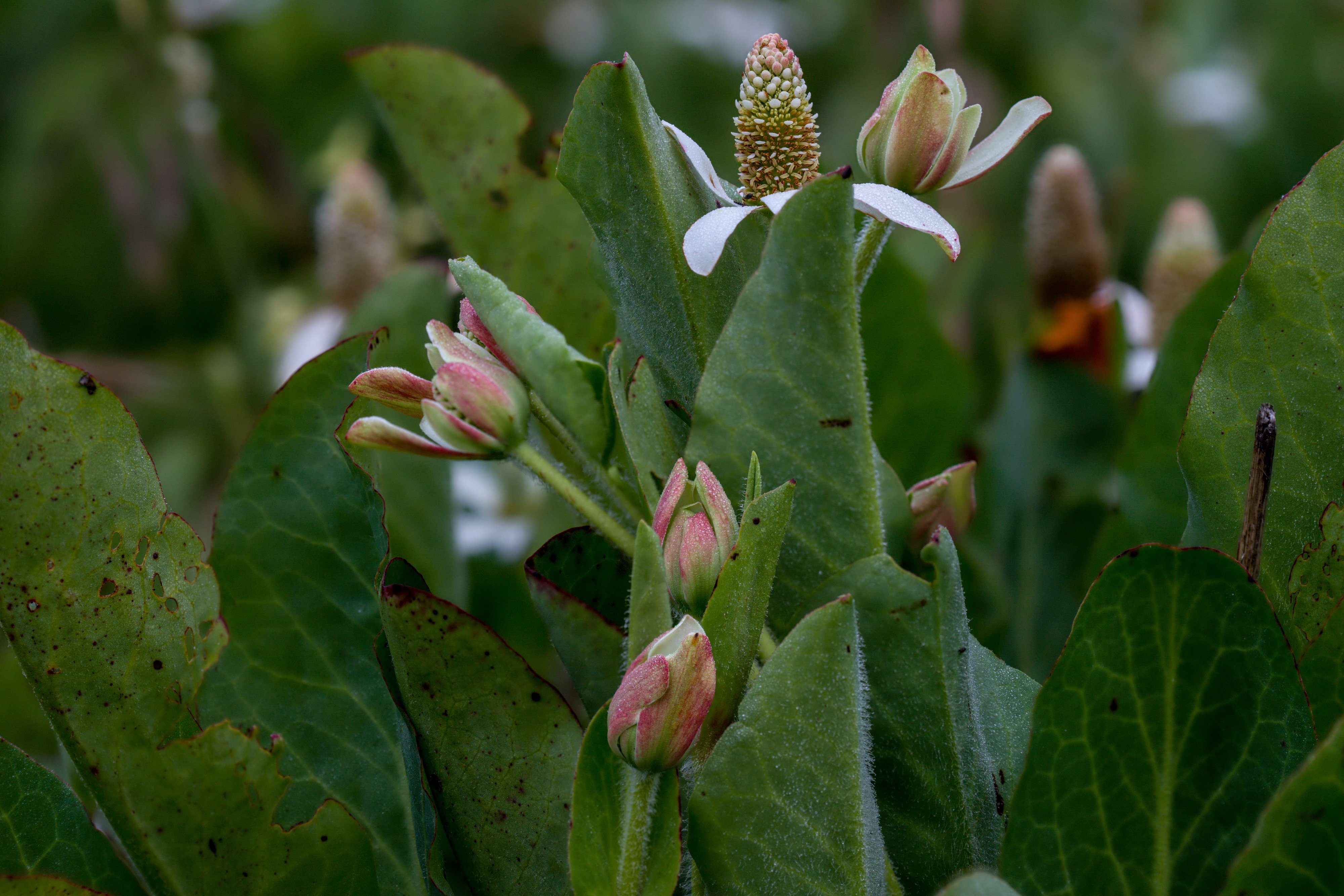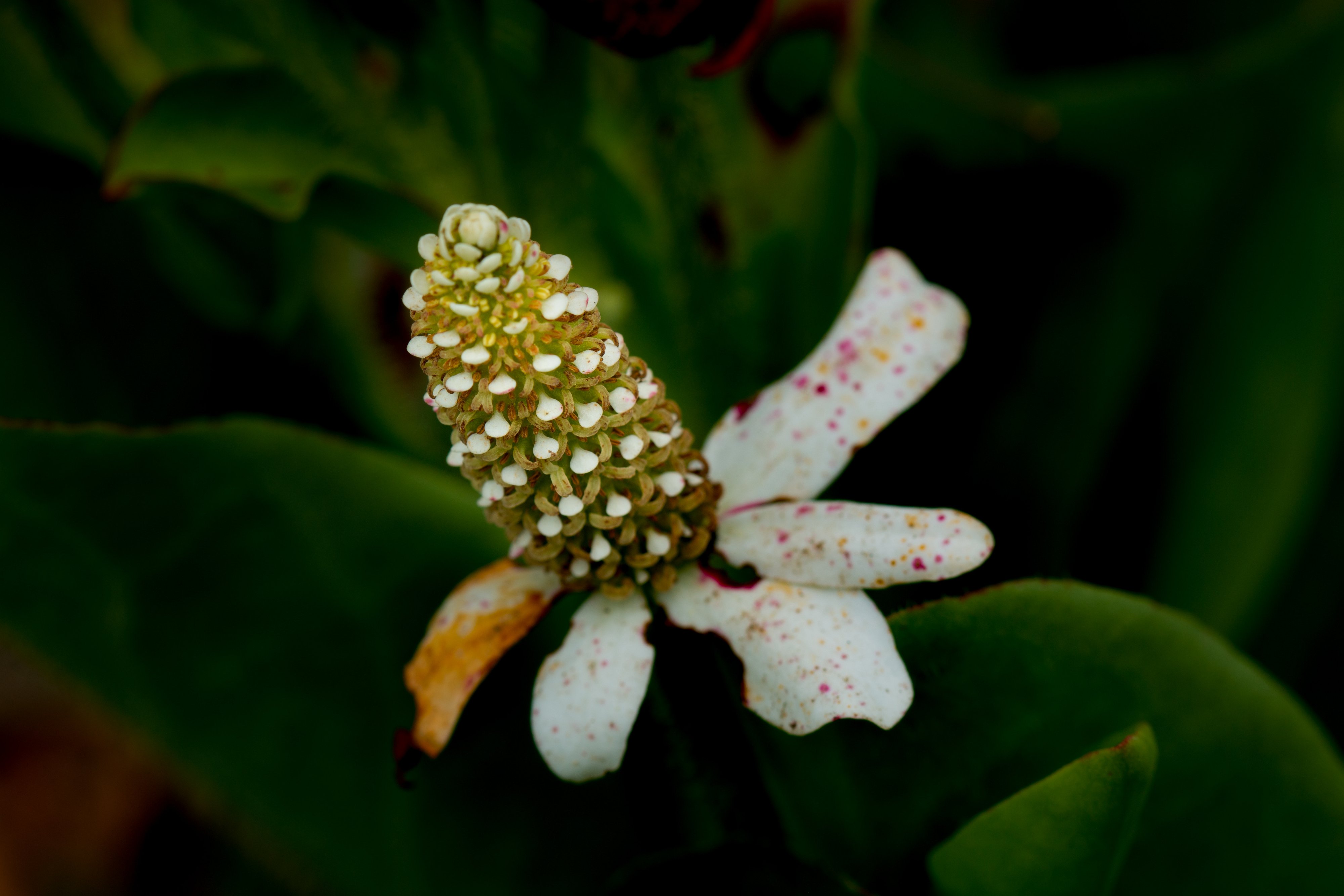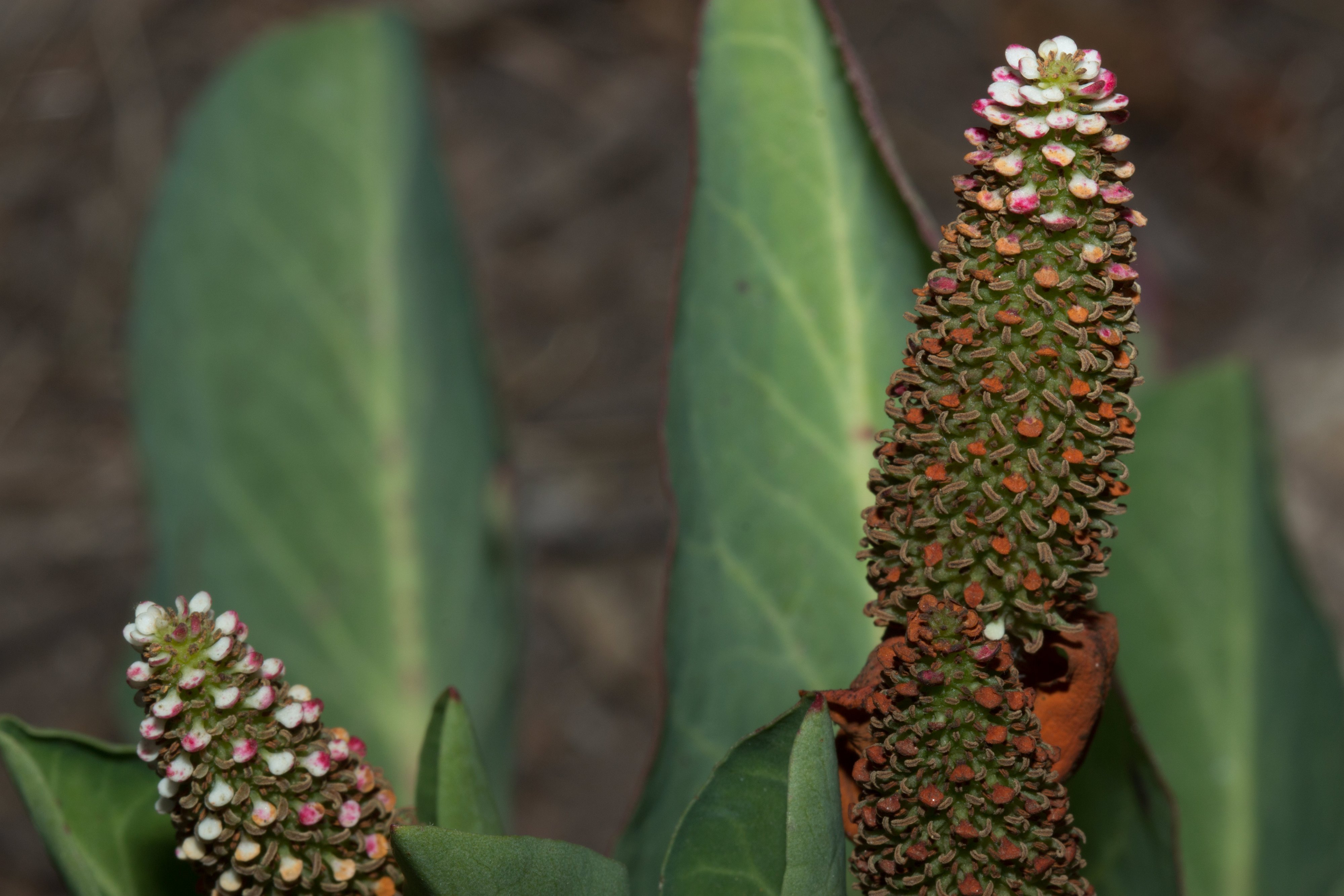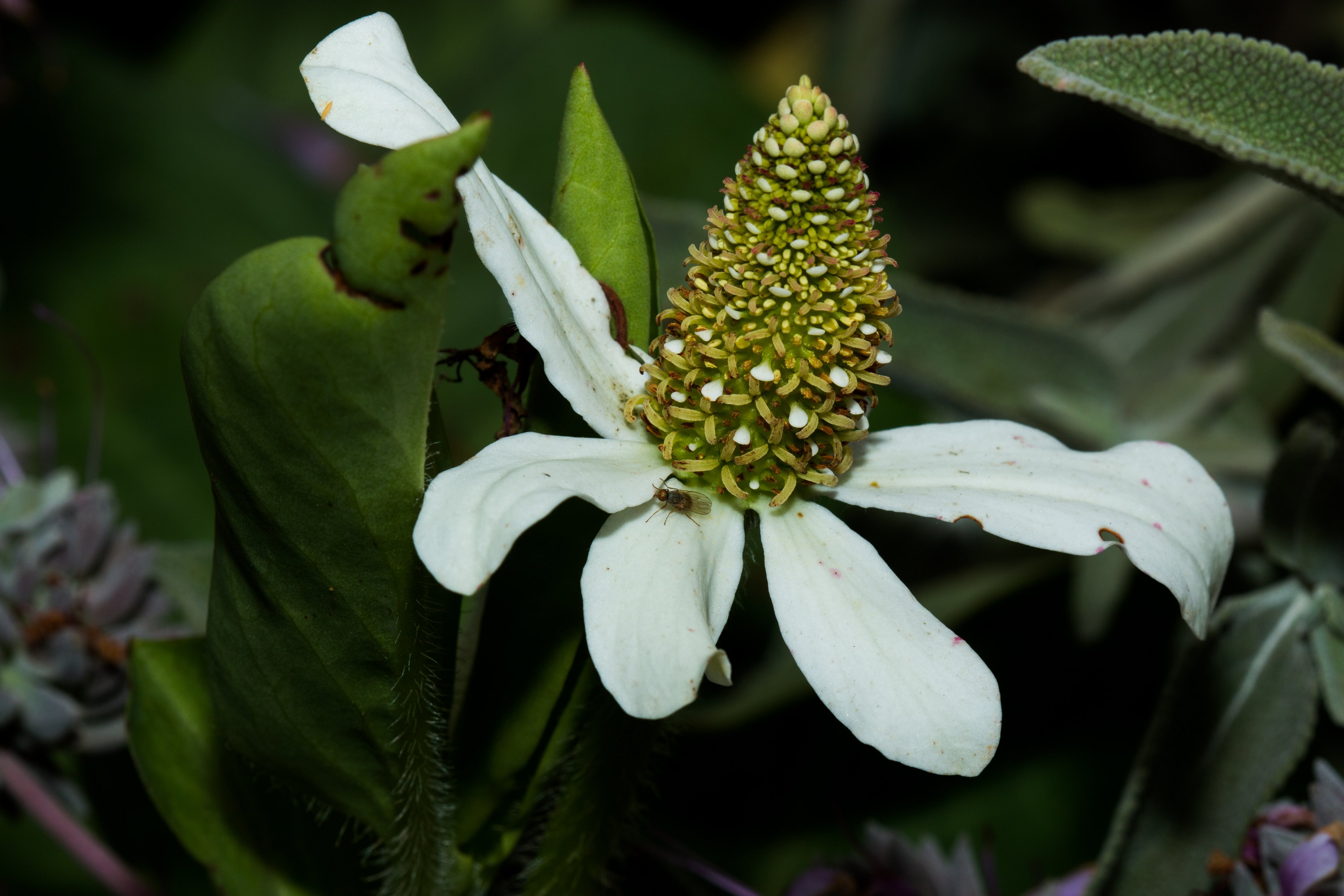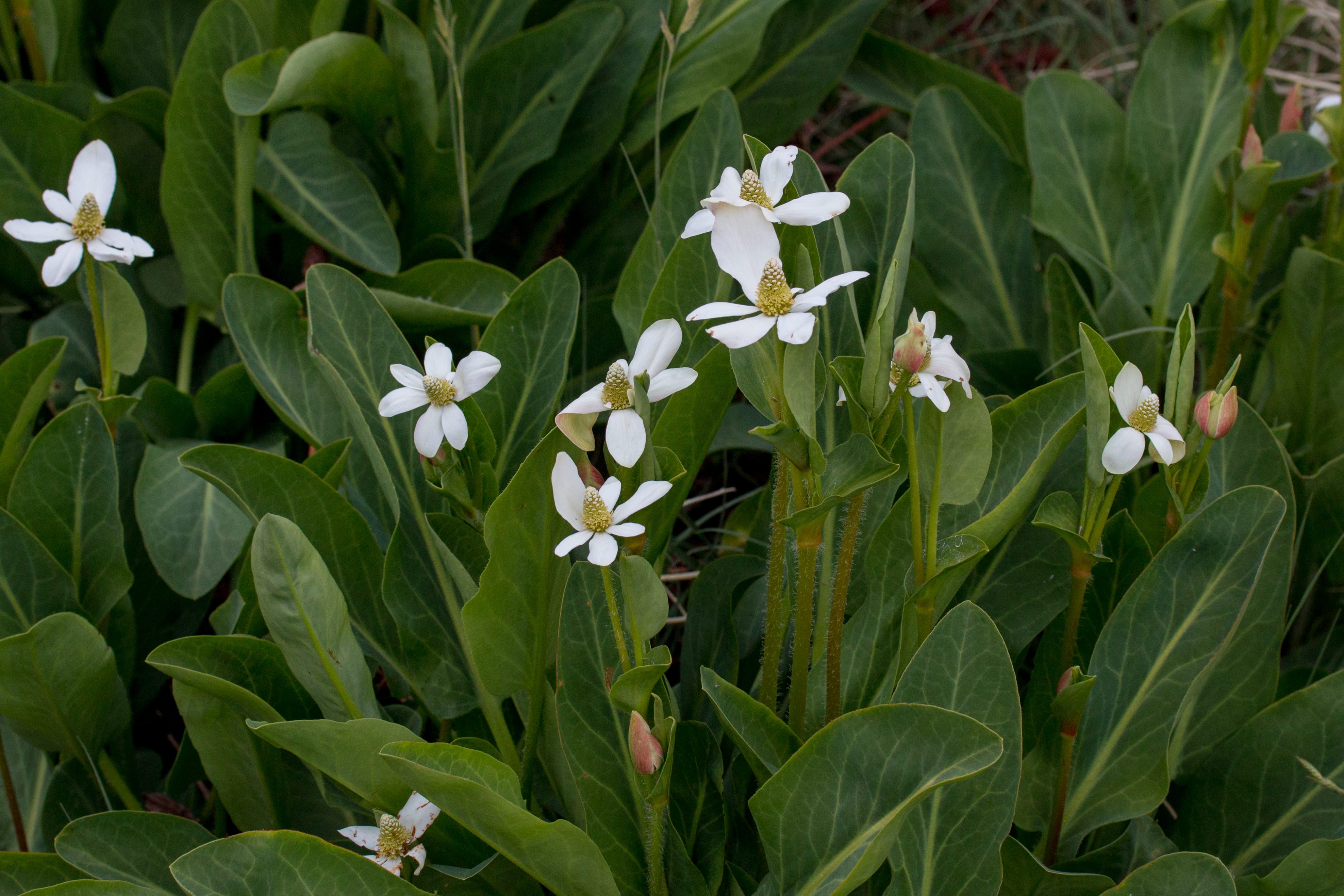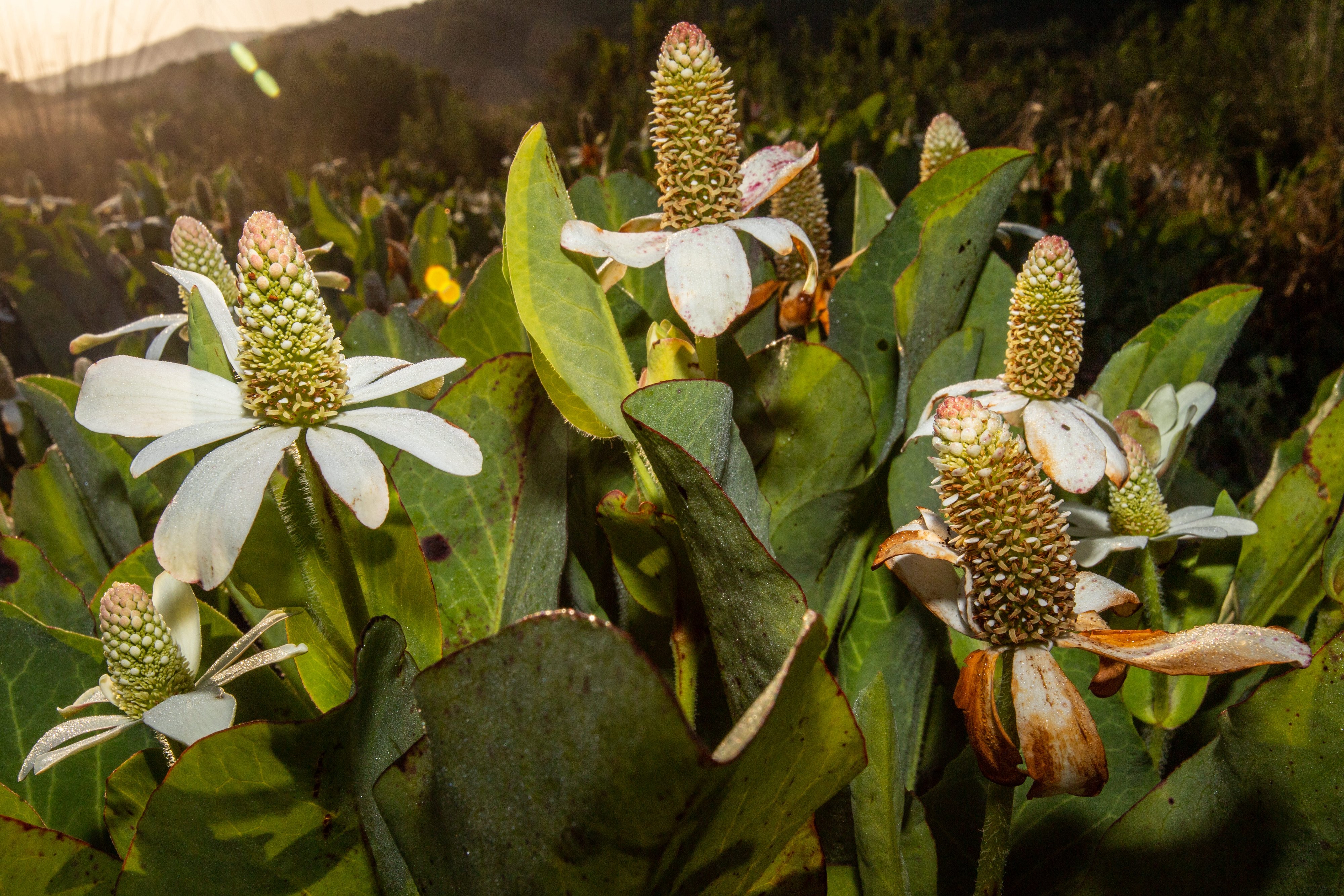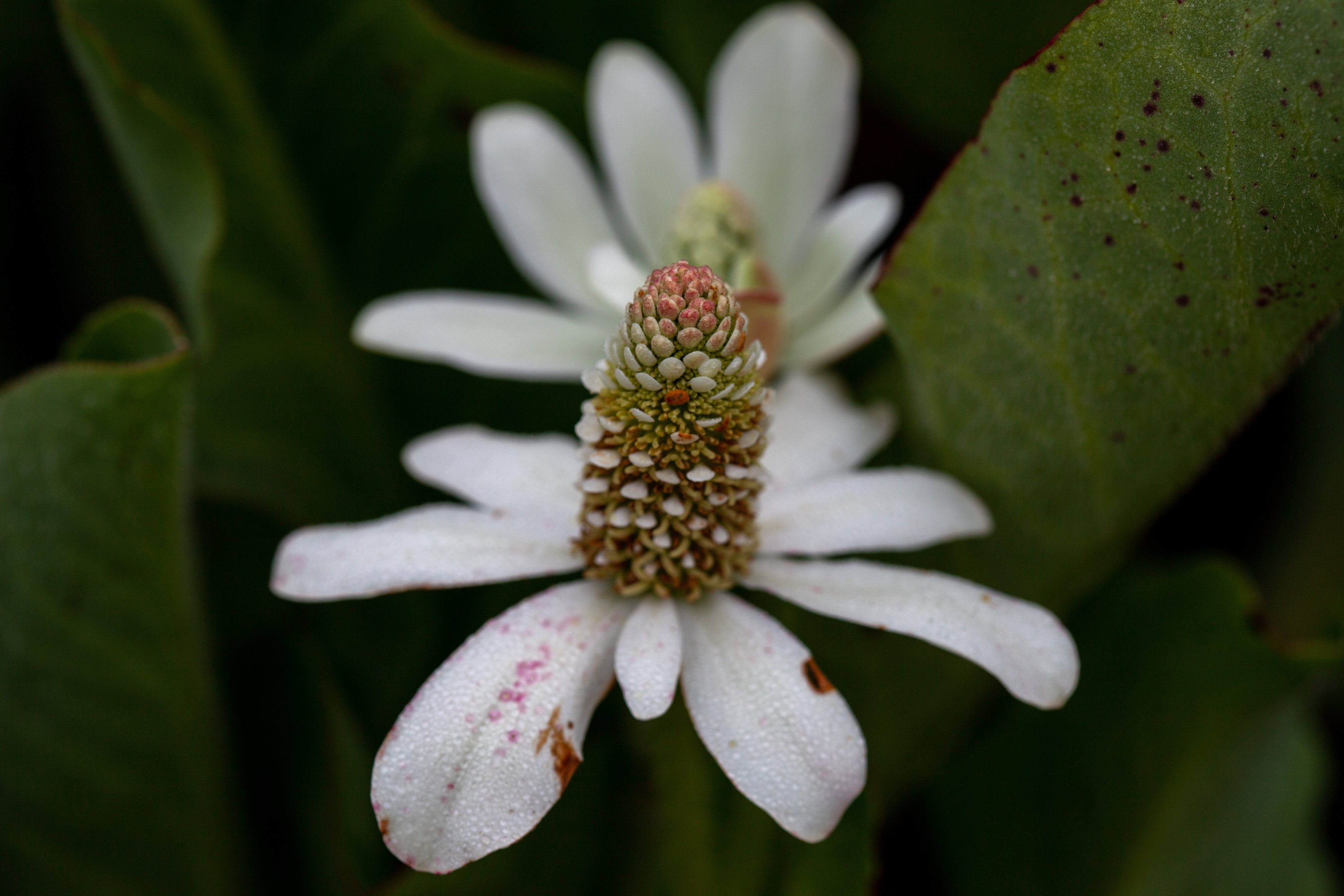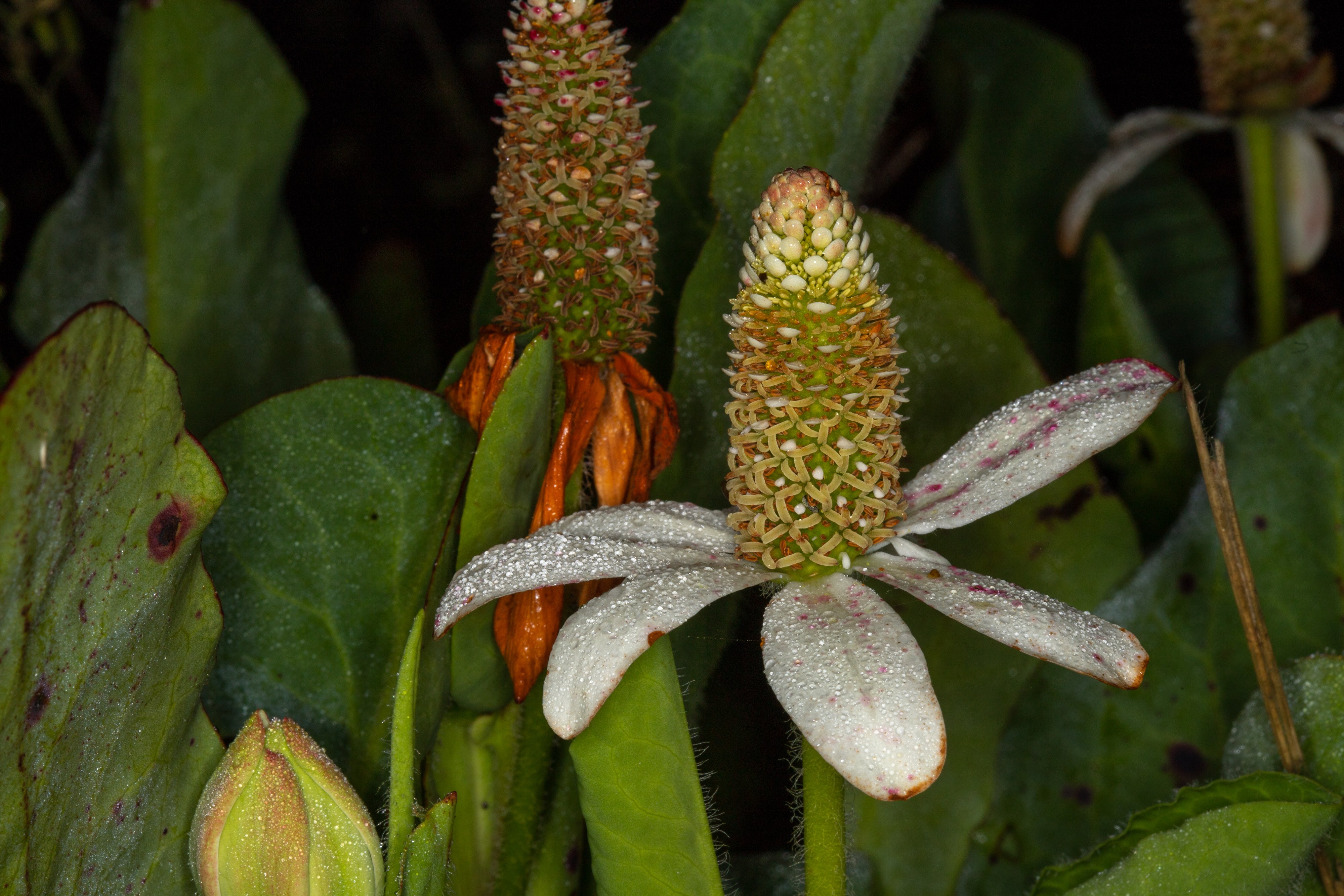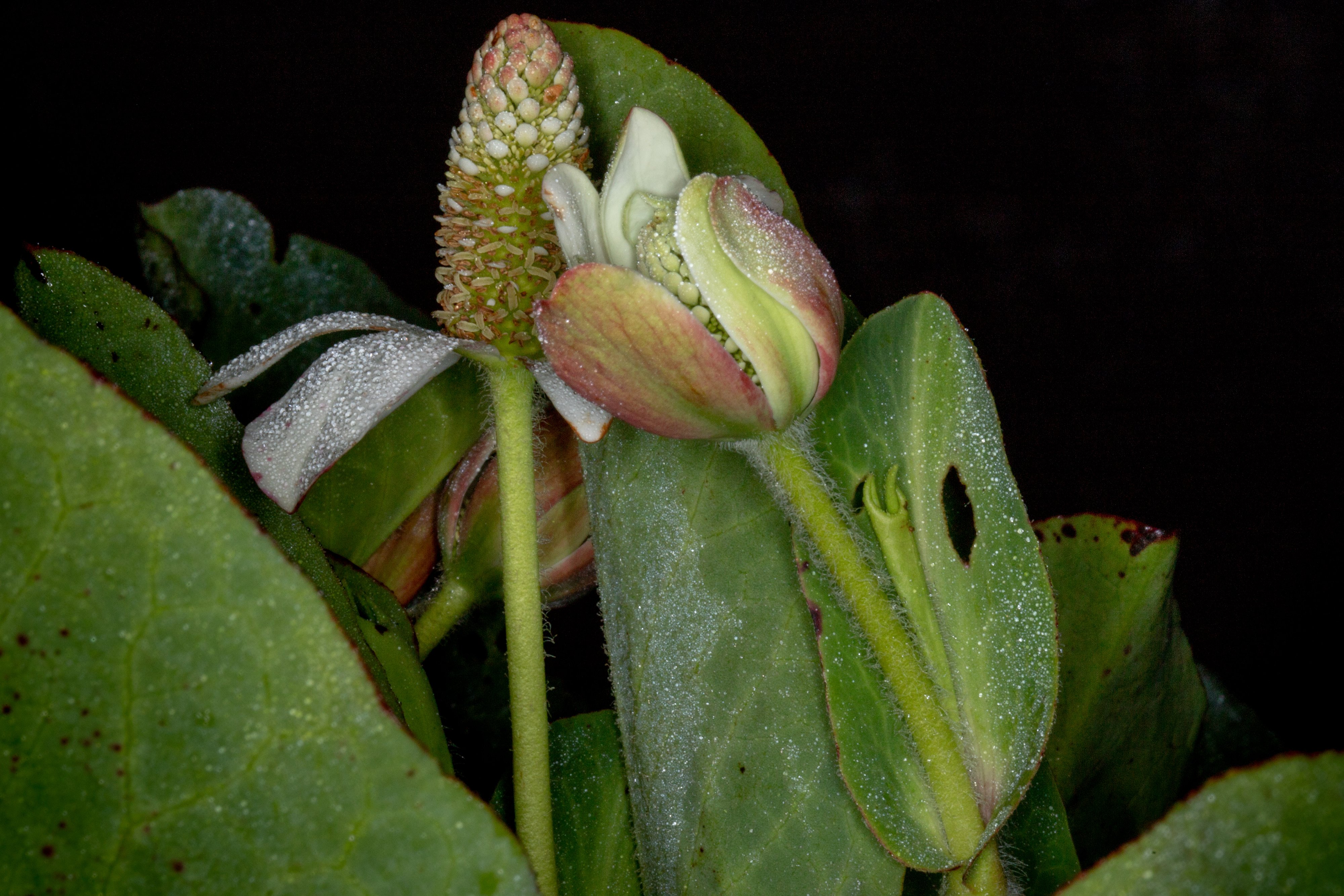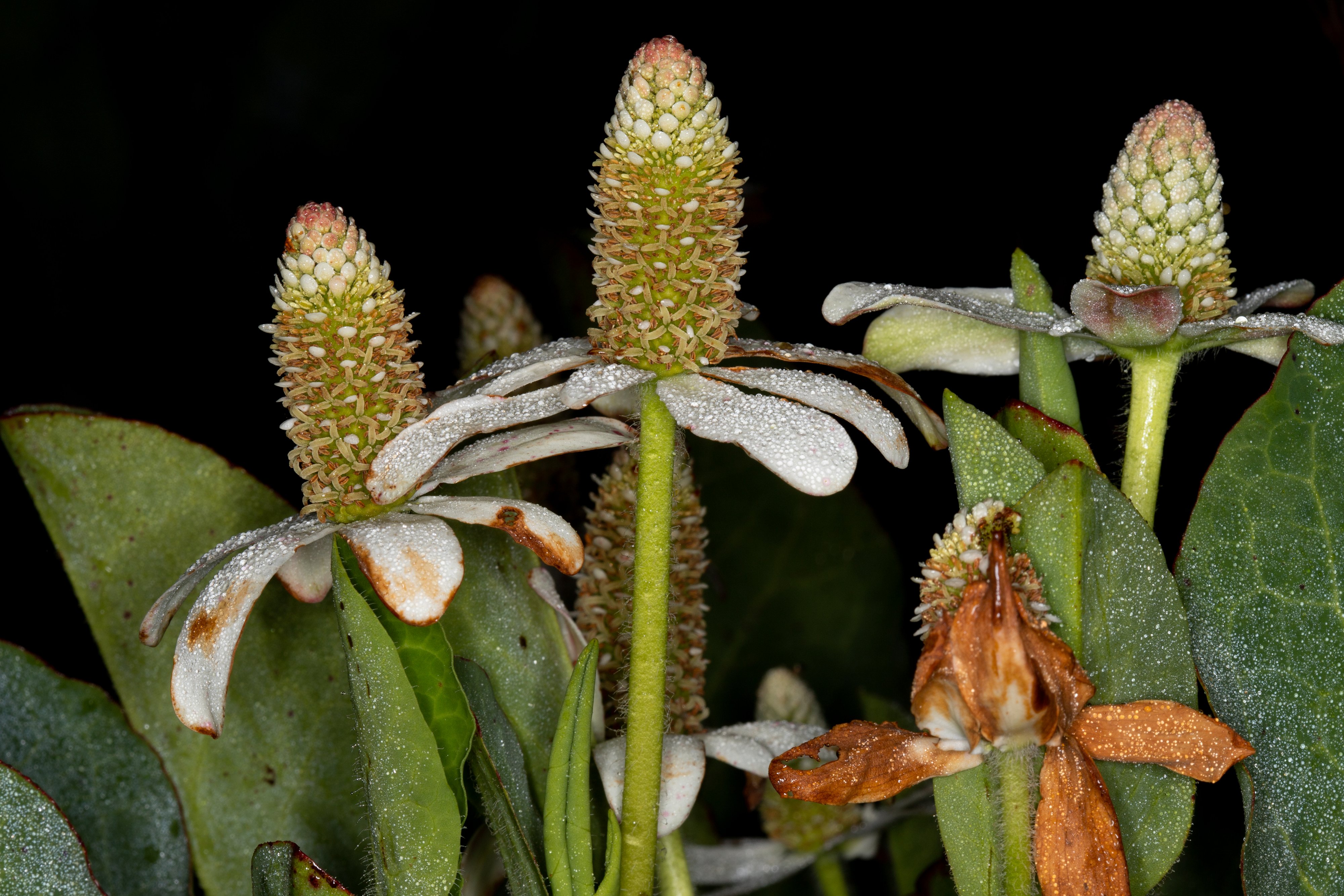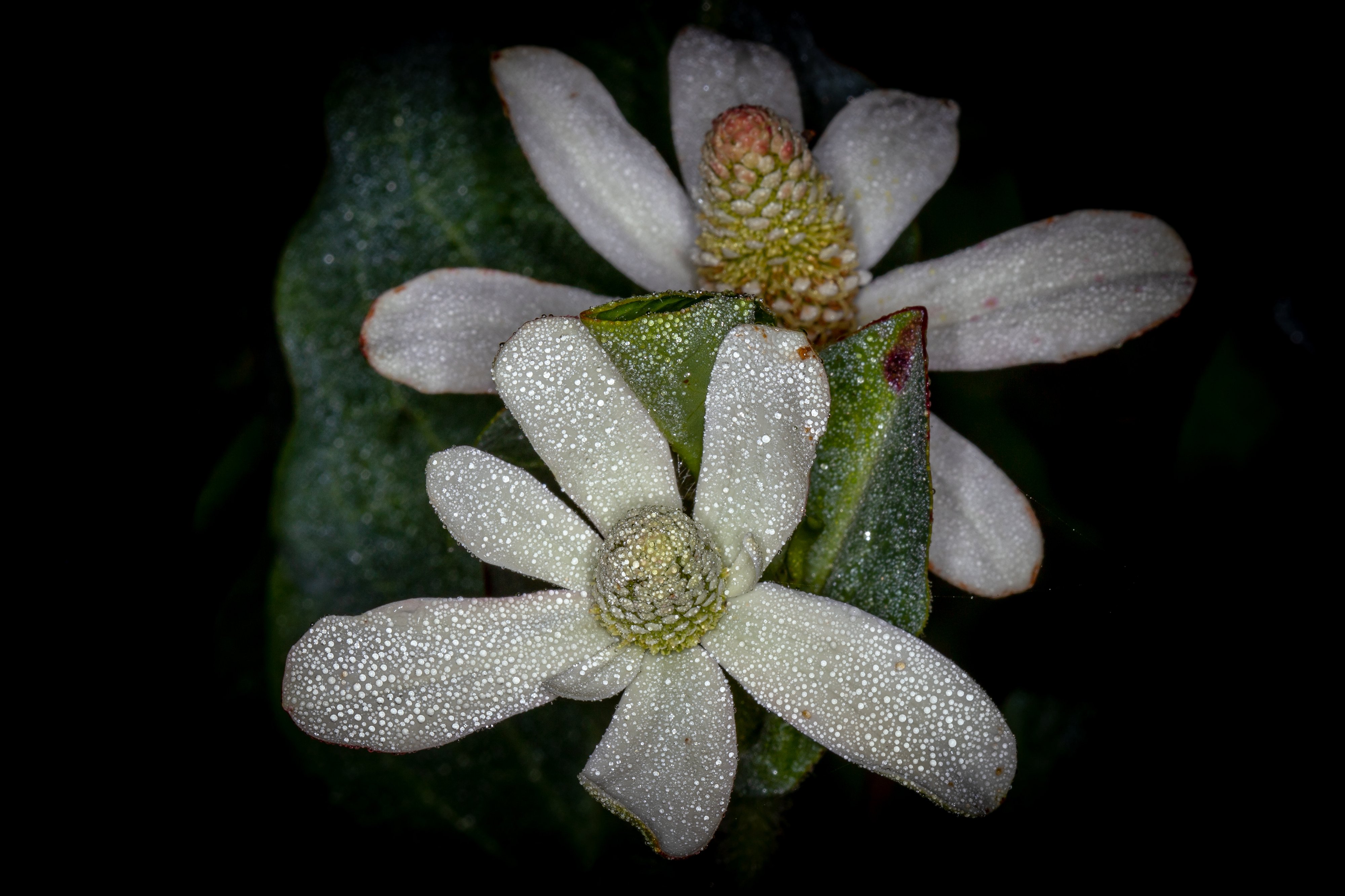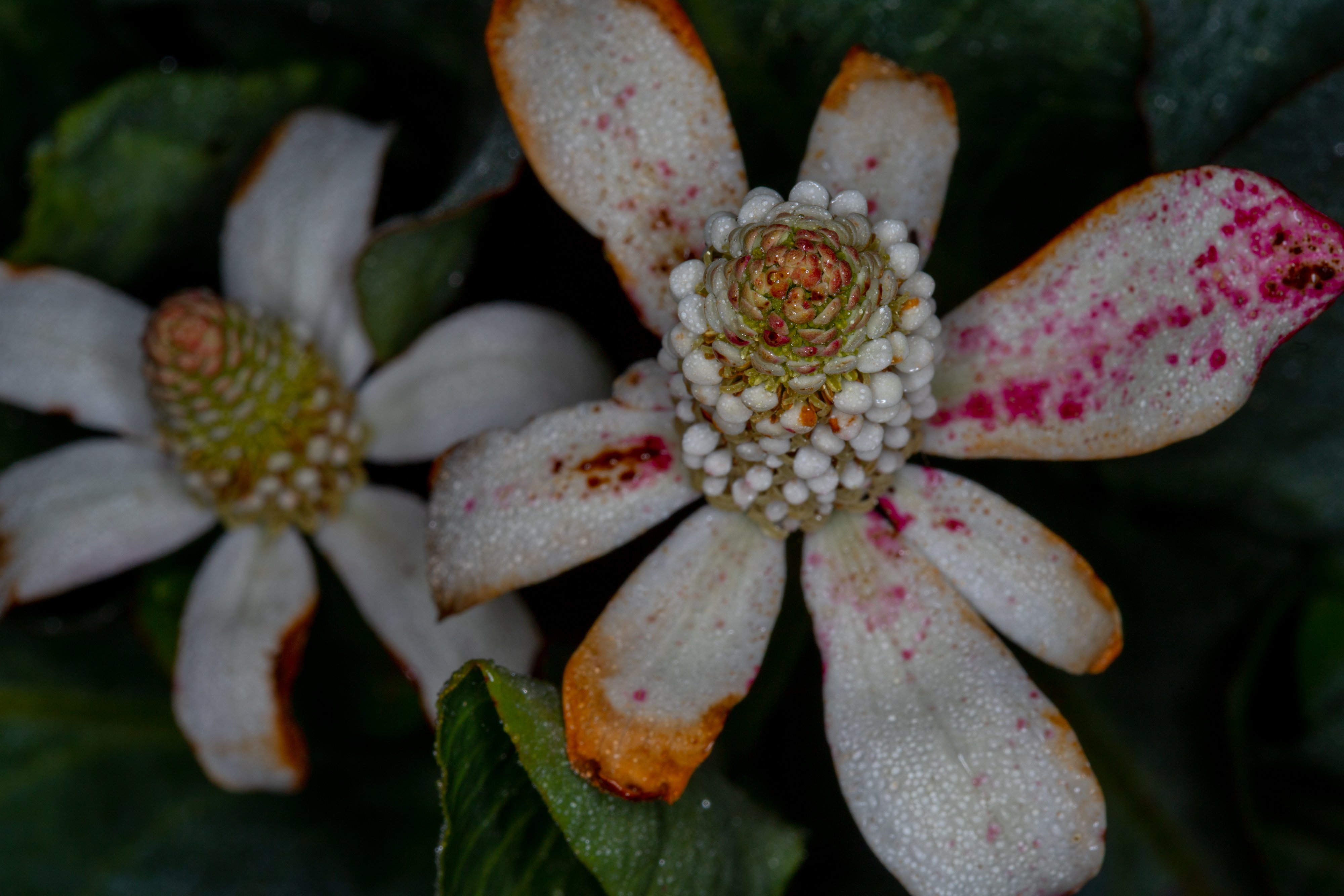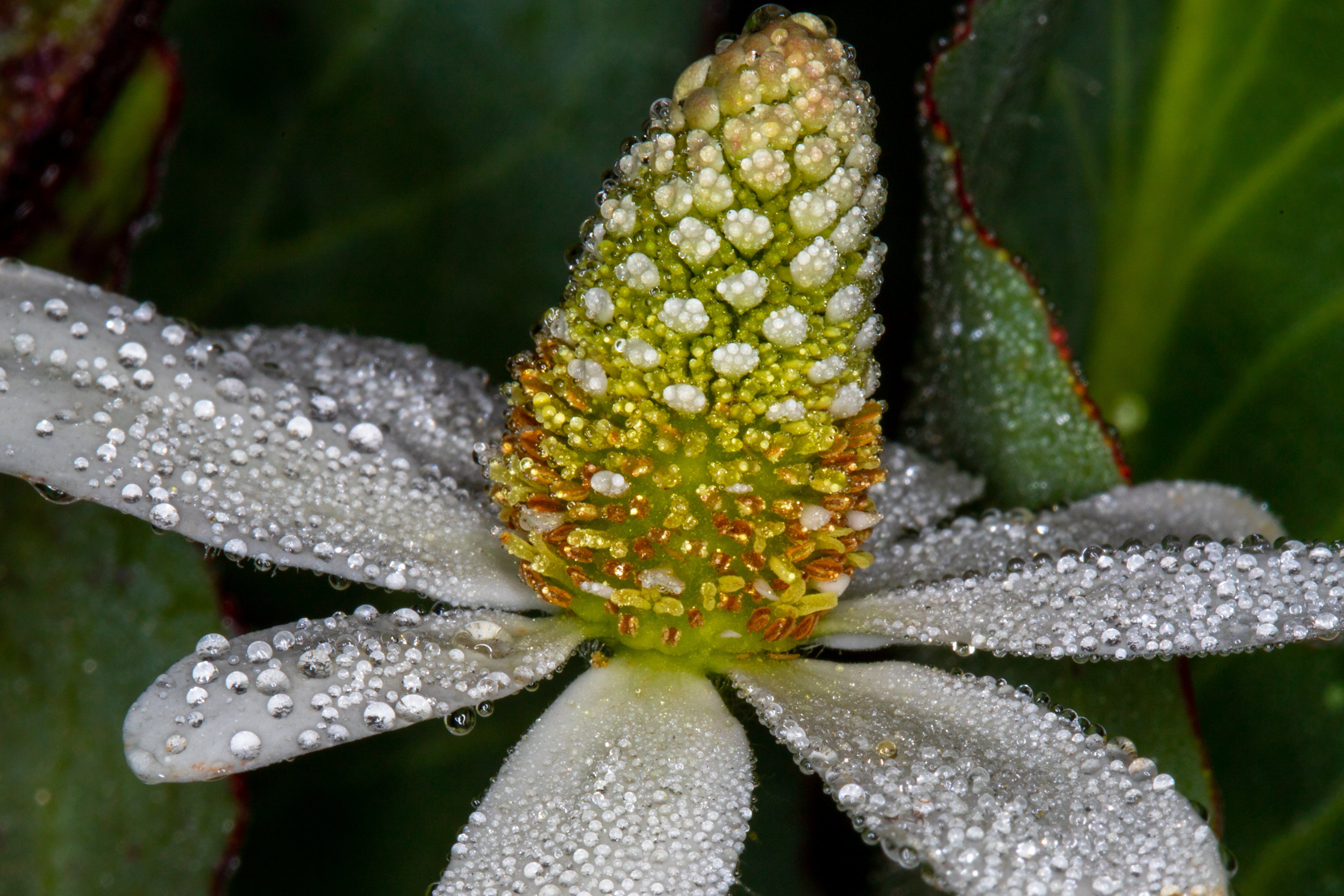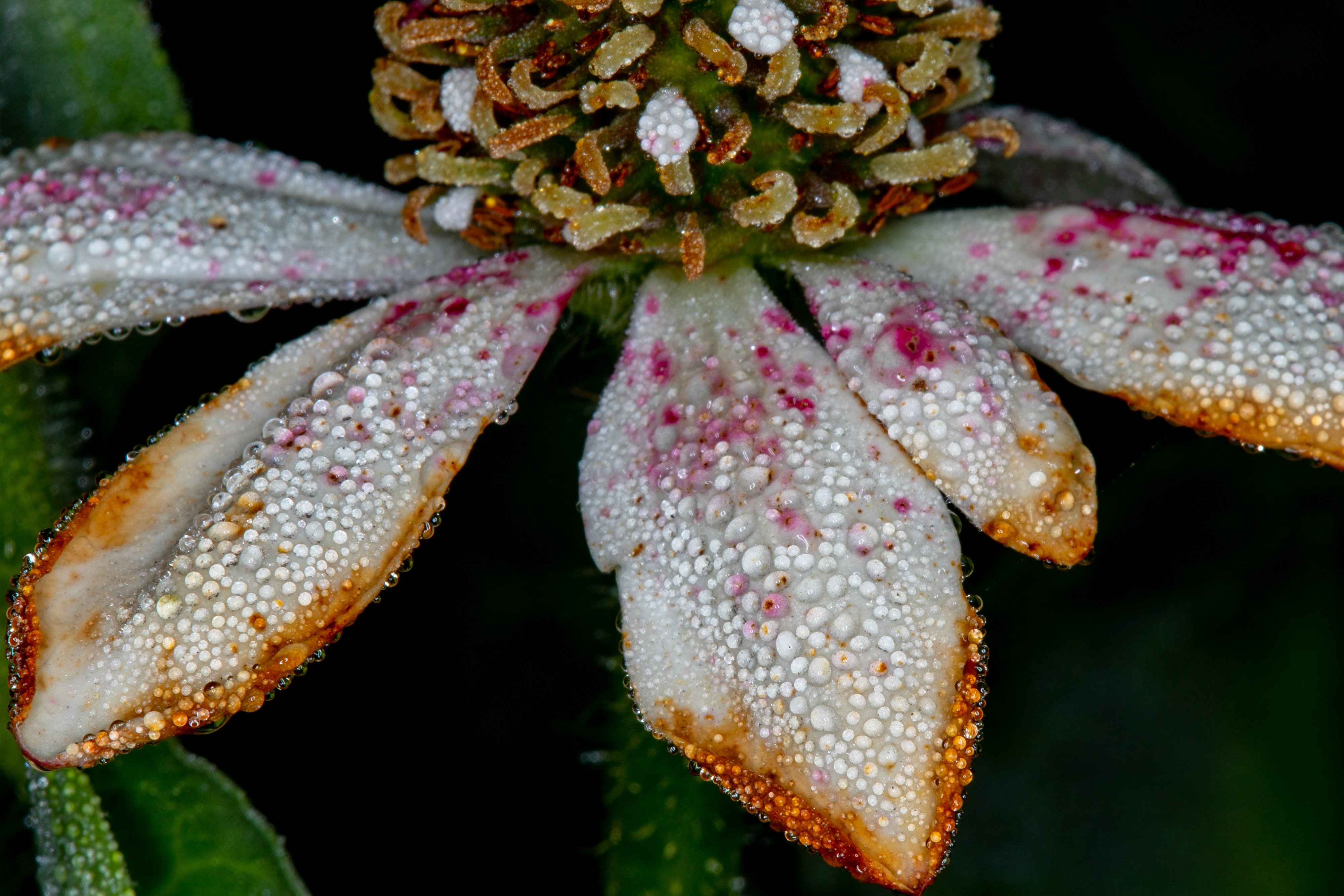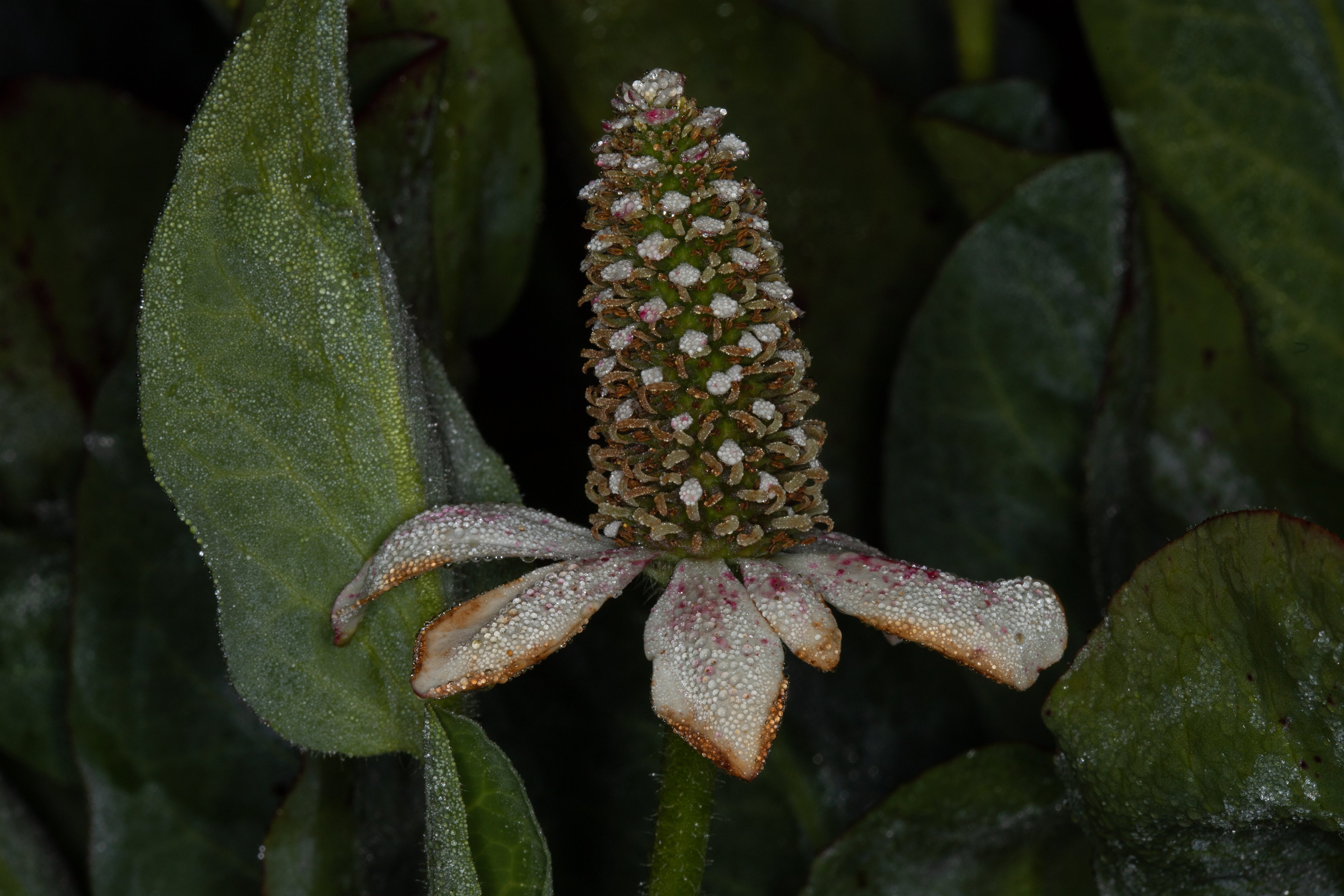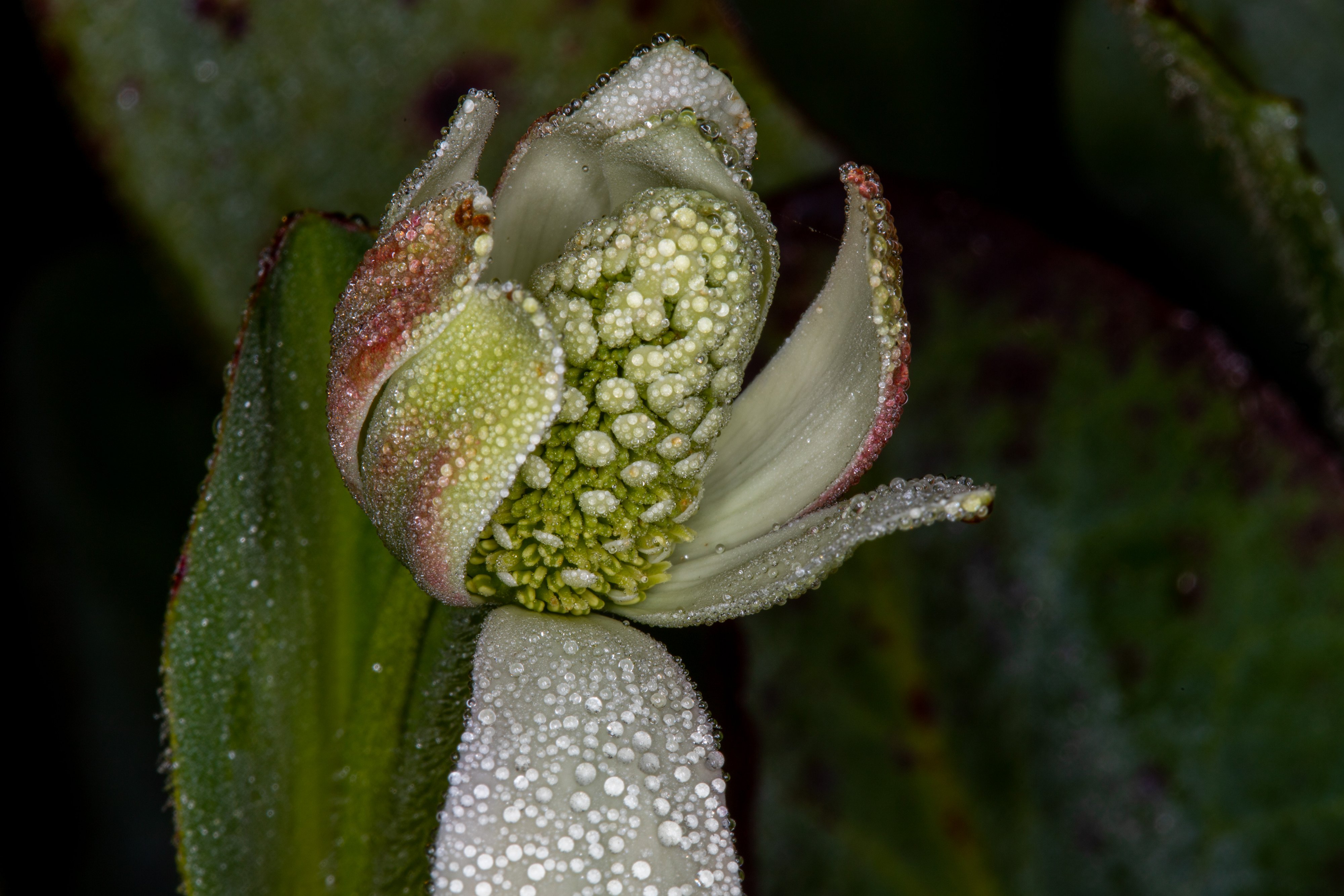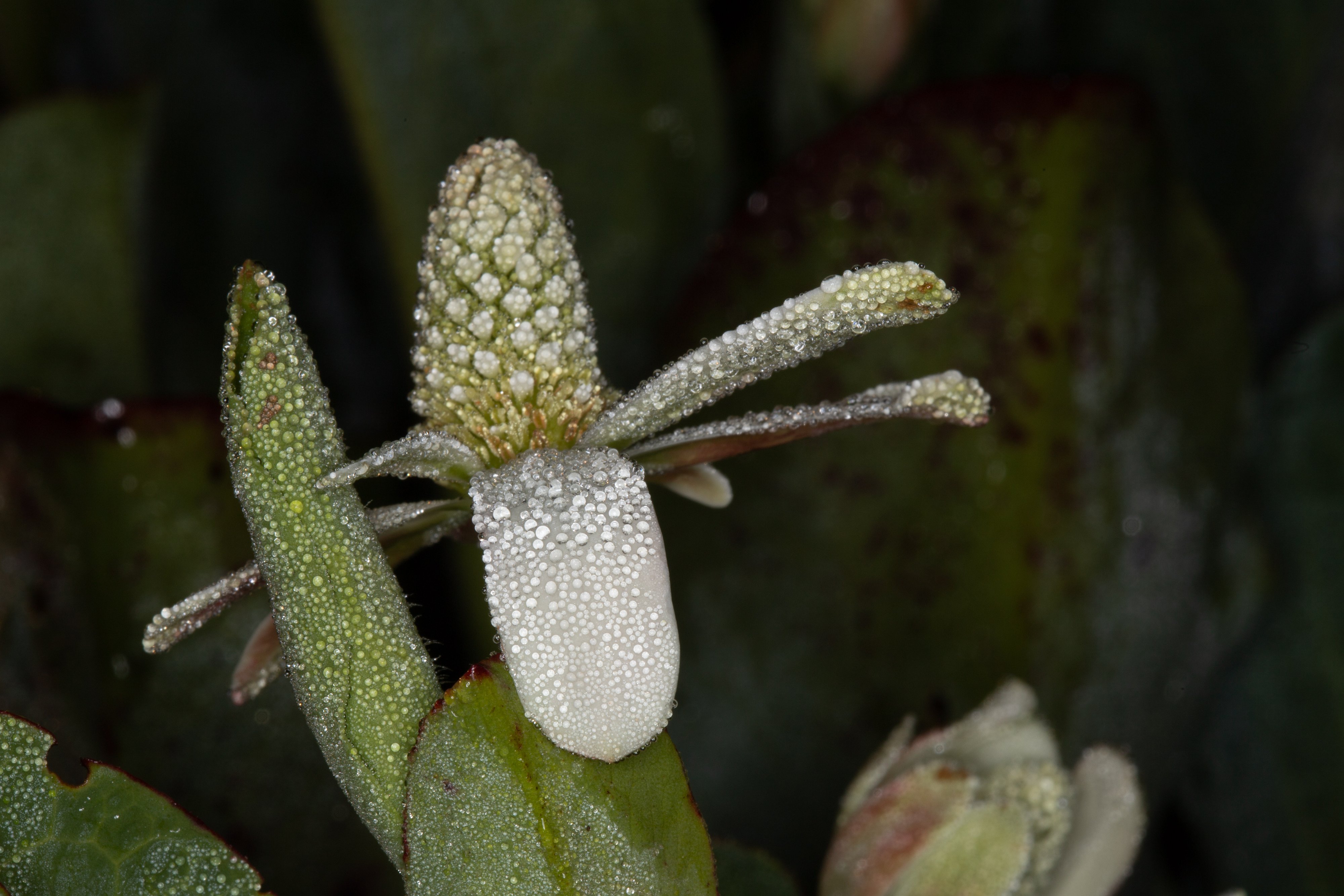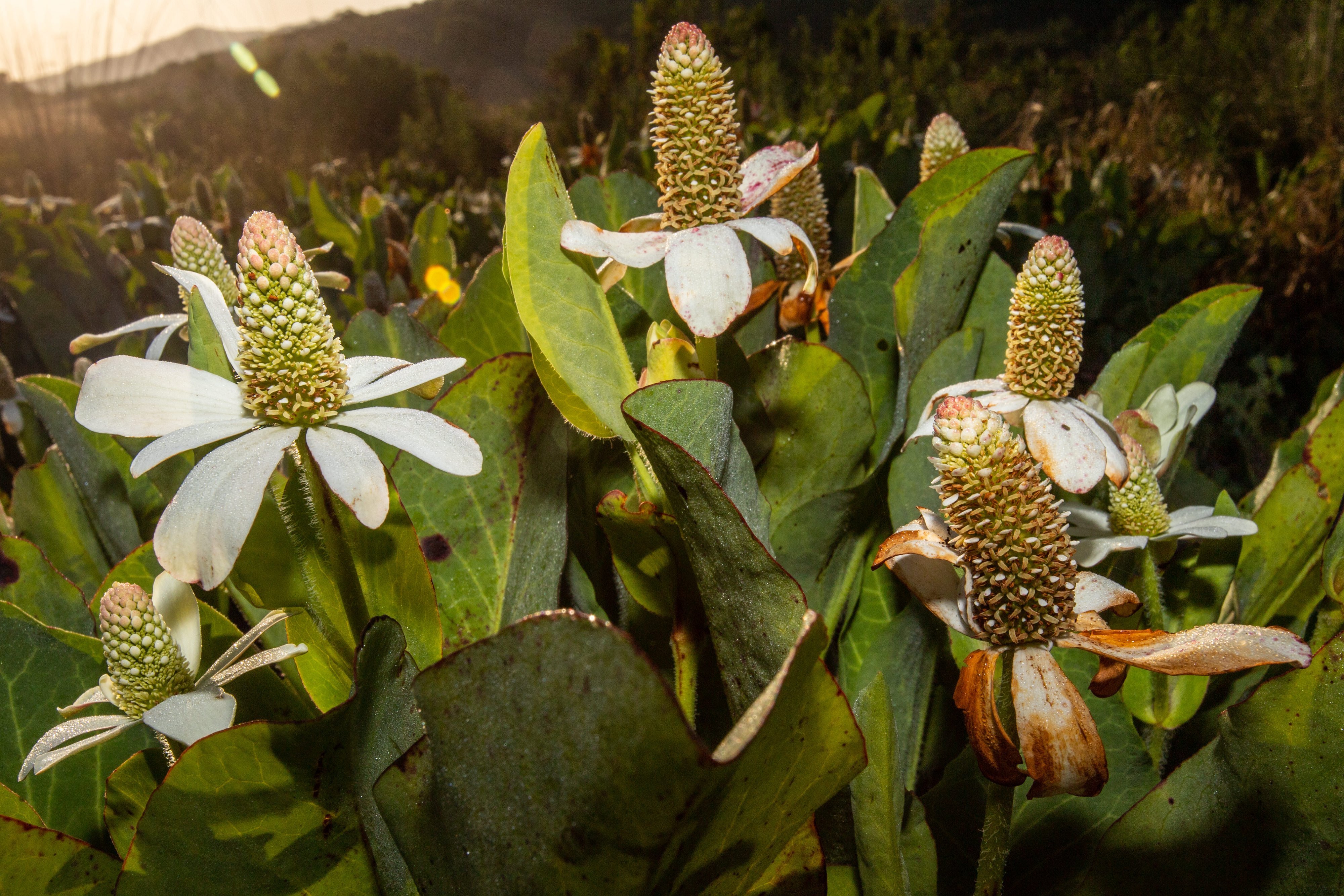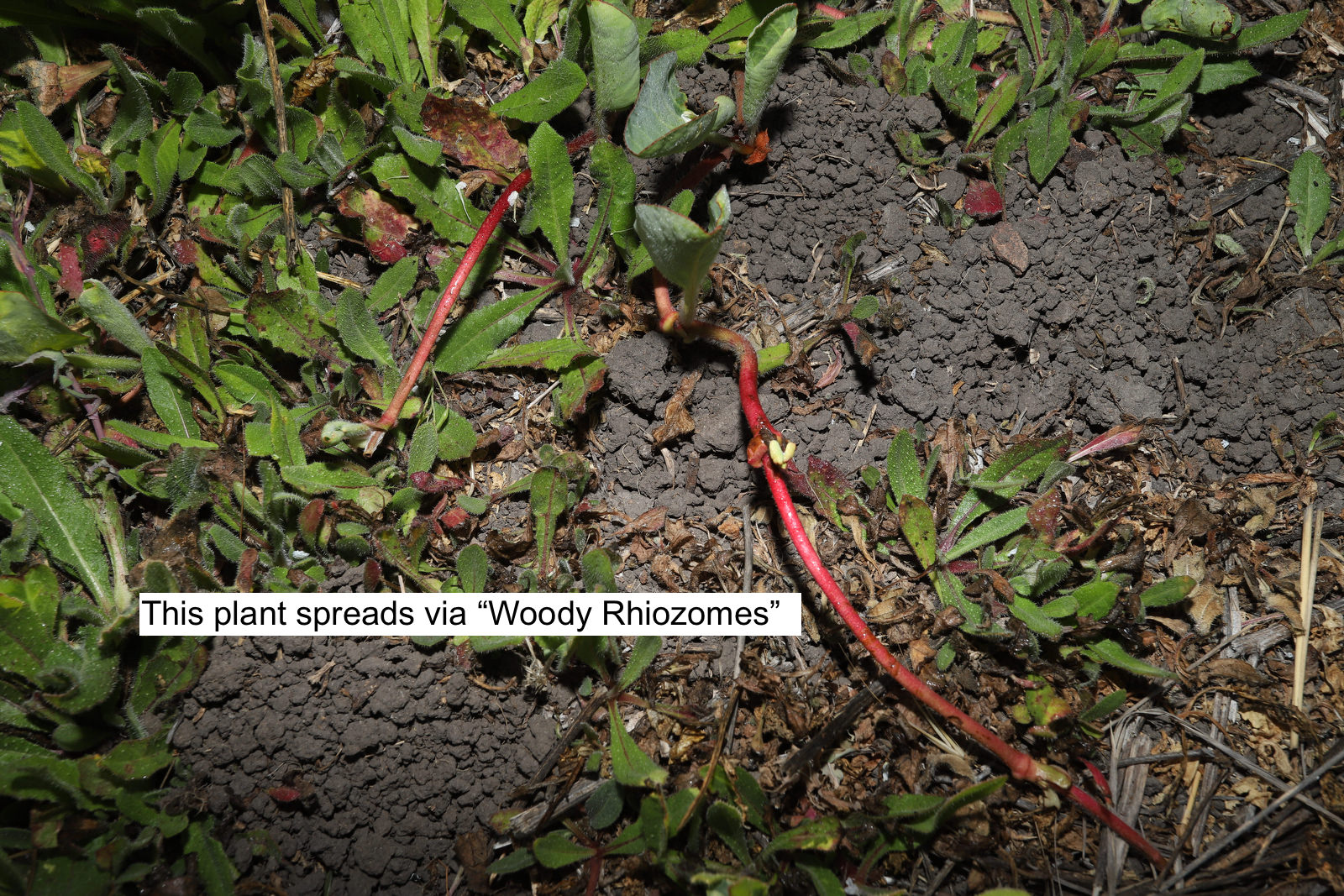Yerba Mansa
- Anemopsis californica
| Common Name(s): | Yerba Mansa |
| Scientific Name: | Anemopsis californica |
| Family: | Saururaceae (Lizard Tail) |
| Plant Type: | Perennial |
| Size: | up to 18 inches |
| Habitat: | Moist soils |
| Blooms: | March to July |
| Fire Response: | Stump Sprout or Seed |
Yerba Mansa Anemopsis californica is a perennial found throughout the West in a variety of damp or wet plant communities - Malibu Lagoon and Rancho Satwiwa are good areas to look for this plant. This herbaceous plant spreads via woody rhizomes allowing it to colonize a location. Minuscule white flowers are attached to a cone that is surrounded by 4-9 large oblong with rounded tipped bracts that look like petals. The bracts turn red with time. The flowers of this plant do not have petals or sepals. About one hundred flowers emanate from a conical-shaped flower head. The leaves have a spicy smell and alternate along the stalk. When in bloom these are among the most unusual and beautiful flowers in the Santa Monica Mountains. Flowers bloom in Spring and remain until the plant goes dormant in the Summer. One of the consequences of this plant's ability to colonize an area is that it can produce blooms that carpet an area.
Leaves commonly appear in a vertical orientation - approximately five inches tall and two or three inches wide that narrow at the tip. Leaves often appear nearly folded in half. The stalks have fine hairs that are clearly visible
This is one of those plants that people have found useful for a variety of ailments. Seeds, leaves, and roots were mashed, boiled, baked and brewed to provide relief for coughs, cramps, irritations, and hunger. Read More [https://plants.usda.gov/plantguide/pdf/csanca10.pdf]
Yerba mansa means "calming herb" in Spanish (yerba = "herb"; Mansa = "calm or tranquil").
Contributed by George Sherman
Last modified: May 17 2024 15:58:28.
Number of Images: 25
Image Size Total: 31,018,337
References:
Wildflowers of the Santa Monica Mountains, by Milt McAuleyFlowering Plants: The Santa Monica Mountains, Coastal and Chaparral Regions of Southern California, by Nancy Dale
Chumash Ethnobotany: Plant Knowledge Among the Chumash People, by Jan Timbrook
Leaf Shapes Primer - Botanical Terms for Leaves: - Link

